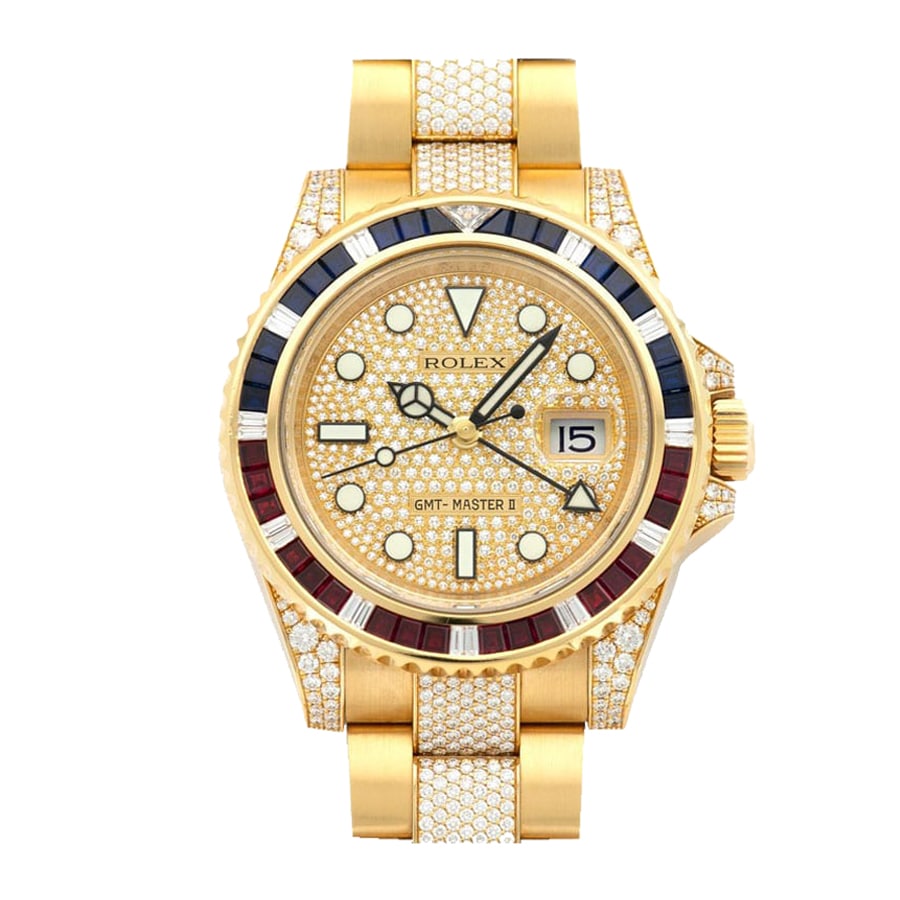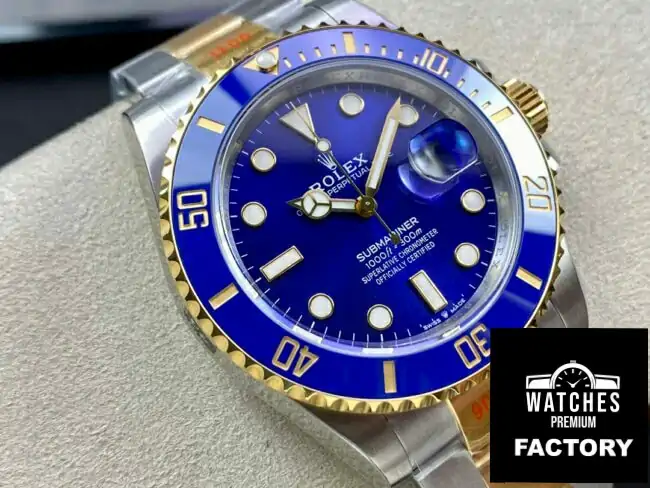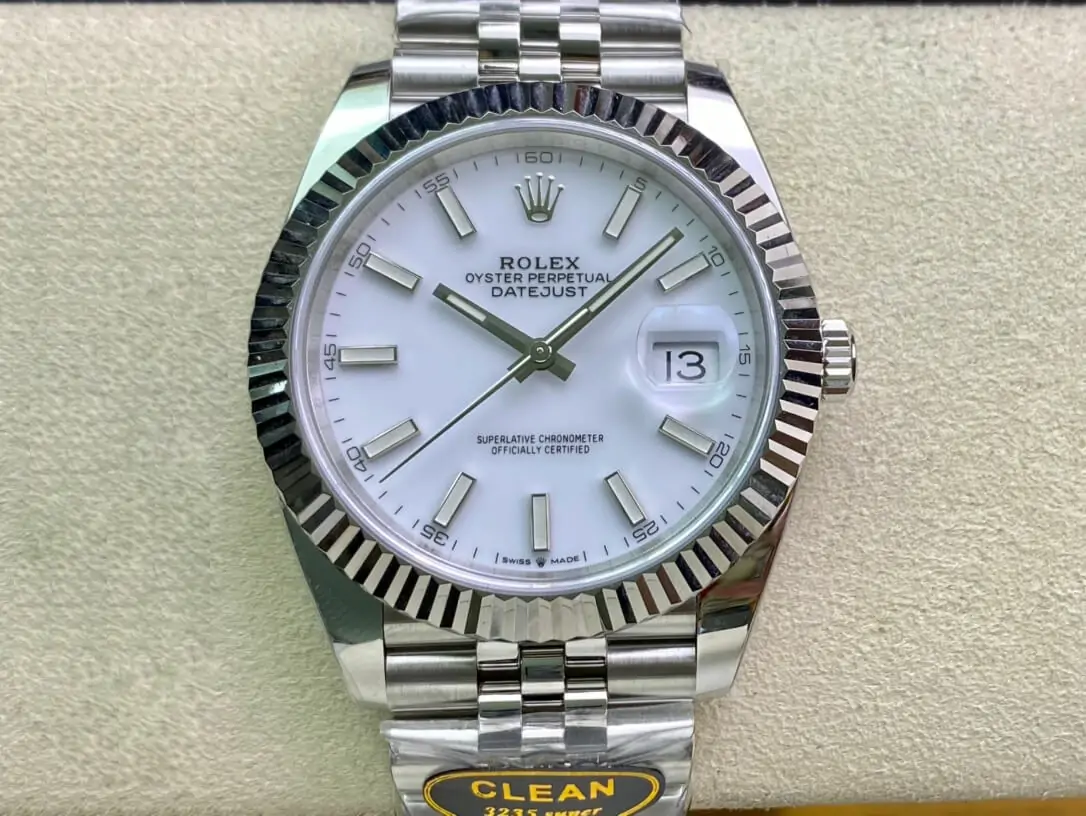The Rolex Air-King stands as an emblem of history and prestige, embodying a pivotal epoch in Rolex’s narrative and the progression of aviation-inspired timepieces. Originating amidst the upheaval and valor of World War II, the Air-King transcends eras, retaining its allure and eminence across successive generations. This iconic watch has undergone continual refinement in both form and function, yet steadfastly preserves its intrinsic essence and legacy.
The narrative of the Rolex Air-King unfolds against the backdrop of the 1940s, a period fraught with the exigencies of war. Initially conceived as part of the “Air Series,” alongside models like the Air-Lion, Air-Giant, and Air-Tiger, the Air-King distinguished itself with its simplicity and durability. Conceived as a tribute to the British Royal Air Force aviators who favored Rolex watches for their reliability, the Air-King’s unembellished dial and modest proportions were tailored to meet the pragmatic needs of aviators.

Throughout its evolution, the Air-King has transitioned from its rudimentary origins to embody a more refined and professional aesthetic, while staying true to its fundamental principles. This evolution is characterized by subtle yet discernible changes in dimensions, style, and technology, a testament to Rolex’s dedication to innovation while honoring the watch’s heritage.
The transformation of the Air-King from a utilitarian instrument to a symbol of professional accomplishment is remarkable. It transcended its original purpose to become a testament to Rolex’s mastery, appealing not only to aviation professionals but also to a broader audience appreciative of its blend of functionality and sophistication.
Now, let’s delve into a detailed examination of each generation of the Air-King, tracing its journey from a vintage classic to a contemporary masterpiece.
1945 – 1957: Origins and Innovations
The inaugural Air-King models emerged in the mid-1940s, typified by references like the 4925, 4365, and 4499. These timepieces, akin to the “Bubbleback” watches of the era, featured prominent cases to accommodate larger movements. With polished cases, cream dials, and Arabic numerals adorning even-numbered markers, these models boasted manual-winding Hunter movements. The introduction of the reference 6552 in 1953 marked a pivotal moment, as Rolex ushered in the era of automatic movements to the Air-King, epitomized by the Caliber 1030.

1958 – 1989: Establishment of the Air-King Collection
This era solidified the Air-King’s identity, epitomized by the iconic Air-King 5500, a mainstay from 1957 to 1989. Characterized by a 34mm case, silver dial, and pencil-style hands, these models exuded functionality and timeless elegance. Renowned for precision, they featured chronometer-rated movements without superfluous complications, embodying Rolex’s ethos of simplicity and reliability.
1989 – 2006: Exploring New Horizons
During this phase, the Rolex Air-King embarked on a journey of experimentation, particularly in color and design. The collection expanded to encompass a spectrum of dial colors and intricate design elements, marrying traditional appeal with contemporary sensibilities. This period heralded a significant evolution in the Air-King’s aesthetic, reflecting Rolex’s commitment to marrying enduring elegance with modern flair.
2007 – 2014: Embracing Modernity
The introduction of the replica Rolex Air-King (2007-2014) signaled a shift towards contemporary features and aesthetics. Models like the reference 114200 retained the 34mm case size but featured wider lugs for a more substantial presence on the wrist. Offering a diverse array of dial colors and the option for an 18k white gold fluted bezel, this era also witnessed the debut of the COSC-certified Caliber 3130, aligning the Air-King with Rolex’s stringent precision standards.
2016 – Present: A New Era Unfolds
The latest iterations of the Air-King, introduced in 2016 with the 116900 and further refined with the 126900 in 2022, herald a new chapter in the collection’s legacy. Featuring a larger 40mm case, distinctive black dial with oversized Arabic numerals, and the advanced Caliber 3230 movement, these models combine Rolex’s storied heritage with cutting-edge technology. With updates to the Oyster bracelet and clasp, along with enhanced luminescence and durability, these contemporary Air-Kings embody the pinnacle of Rolex’s craftsmanship and innovation.
Distinguishing Vintage from Modern Rolex Air-Kings
In summary, let’s delineate the disparities between vintage and modern Rolex Air-King models across key attributes:
Materials: Vintage models, exemplified by the ref. 5500, predominantly utilized stainless steel with occasional yellow gold accents, while modern iterations, such as the ref. 116900, feature Oystersteel for superior corrosion resistance.
Sizes: Vintage Air-Kings typically boasted a modest 34mm case size, contrasting with the larger 40mm dimensions of contemporary models, aligning with prevailing trends in watch design.
Bezels: Vintage Air-Kings favored simplistic bezel designs, whereas modern counterparts offer a broader array, including smooth, engine-turned, and 18k white gold fluted options.
Dials: Vintage Air-King dials were characterized by their simplicity, while modern renditions feature bolder designs with prominent Arabic numerals and vibrant accents.
Movements: Vintage Air-King models housed reliable but non-chronometer-rated movements, while modern iterations incorporate advanced calibers with enhanced accuracy and power reserve.
The evolution of the Rolex Air-King from a utilitarian timepiece to a contemporary icon underscores Rolex’s unwavering commitment to excellence and innovation. Whether cherished for its historical significance or admired for its state-of-the-art features, the Air-King remains a paragon of prestige and craftsmanship, epitomizing the enduring legacy of fake Rolex. Enthusiasts seeking to explore this storied range can avail themselves of replica watches, offering a comprehensive array of vintage and modern Air-King models, each encapsulating a unique tale of aviation and elegance.
